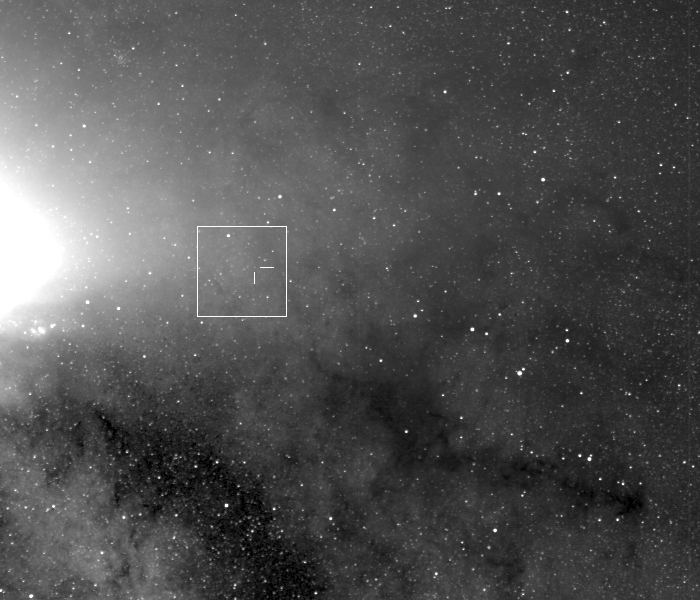While on duty observing the Sun from its position in solar orbit, NASA’s STEREO-B spacecraft captured the sudden appearance of a distant bright object. This flare-up turned out to be a nova — designated Sagittarii 2012 — the violent expulsion of material and radiation from a re-igniting white dwarf star.
Unlike a supernova, which is the cataclysmic collapse and explosion of a massive star whose core has finally fused its last, a nova is the result of material falling onto the surface of a white dwarf that’s part of a binary pair. The material, typically hydrogen and helium gas, is drawn off the white dwarf’s partner which has expanded into a red giant.
Eventually the white dwarf cannot contain all of the material that it has sucked in from its neighbor… material which has been heated to tremendous temperatures on its surface as it got compressed further and further by the white dwarf’s incredibly strong gravity. Fusion occurs on the dwarf’s outermost layers, blasting its surface out into space in an explosion of light and energy.
This is a nova — so called because, when witnessed in the night sky, one could suddenly appear as a “new star” in the heavens — sometimes even outshining all other visible stars!
An individual nova will soon fade, but a white dwarf can produce many such flares over time. It all depends on how rapidly it’s accreting material (and how much there is available.)
Over the course of 4 days, Sagittarii 2012 reached a magnitude of about 8.5… still too dim to be seen with the unaided eye, but STEREO-B was able to detect it with its SECCHI (Sun Earth Connection Coronal and Heliospheric Investigation) instrument, which is sensitive to extreme ultraviolet wavelengths.
The video above was made from images acquired from April 20 – 24, 2012.
It’s not known yet how far away Sagittarii 2012 is but rest assured it poses no threat to Earth. The energy expelled by a nova is nowhere near that of a supernova, and although you wouldn’t want to have a front-row seat to such an event we’re well away from the danger zone.
What this does show is that STEREO-B is not only a super Sun-watching sentinel, but also very good at observing much more distant stars as well!
Thanks to @SungrazerComets for the heads-up on this novel nova!
[/caption]

